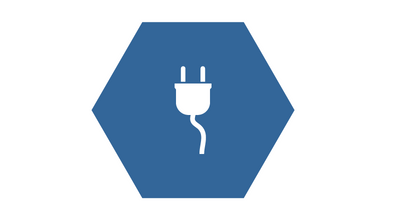At the heart of the Community-wide Energy and Climate Plan (CECAP) are 12 different strategies or ways our community can work to reduce greenhouse gas emissions locally. Fully half of the strategies included in the plan pertain to energy use, generation, and management in buildings. This makes sense. The largest source of greenhouse gas emissions in Fairfax County is building energy use; 49 percent of emissions come from energy used in buildings around the county.
Building occupants use energy to power lights and HVAC systems for heating and cooling. They draw power for electronics and appliances and rely on energy for everything from work to entertainment. There are two principal approaches to reducing greenhouse gas emissions from energy use in buildings.
1. Reduce the amount of energy used by people in buildings.
2. Change the source of the power so that the energy people use in buildings is clean and renewable.
If we are going to successfully reduce our greenhouse gas emissions 50 percent by 2030, and achieve carbon neutrality in Fairfax County by 2050, we have to attack both of these approaches head-on. We all need to take informed action. This begins with a solid understanding of what each strategy involves. To that end, we are pleased to present a very brief tour of the six CECAP energy strategies.
 Increase Energy Efficiency and Conservation in Existing Buildings
Increase Energy Efficiency and Conservation in Existing Buildings
Energy efficiency and conservation reduce overall energy consumption, lowering greenhouse gas emissions from residential, commercial, and local government buildings. By increasing energy efficiency and conservation in existing buildings, we could achieve 13 percent of our carbon neutrality goal. We can do this by making changes, small and large, at home (think changing lightbulbs, or changing out your HVAC system!), by improving the energy performance of our commercial buildings, and by using demand management to reduce our energy use during peak periods.
 Electrify Existing Buildings
Electrify Existing Buildings
Electrification reduces greenhouse gas emissions by switching the source of a building’s power from fossil fuels (like natural gas) to electricity. As the power grid gets greener, so will our energy use at home, at work, and anywhere we visit or play. By electrifying our existing buildings, we could achieve 11 percent of our carbon neutrality goal. We can get this done by moving our homes away from natural gas and fuel oil, toward electric heat pumps. We can also outfit our existing commercial buildings with heat pumps and reduce our use of refrigerants that produce copious amounts of harmful greenhouse gases.
 Implement Green Building Standards for New Buildings
Implement Green Building Standards for New Buildings
Building green from the outset is one of the best ways to reduce greenhouse gas emissions from buildings over time. Building design, construction, and operation all make a difference. A building can have a useful lifespan of 40 or 50 years, so it’s important to get it right from the start. By implementing green building standards for new buildings, we could achieve one percent of our carbon neutrality goal. This will only be possible with more stringent energy building codes and using all-electric systems in new buildings.
.png) Increase the Amount of Renewable Energy In The Electricity Grid
Increase the Amount of Renewable Energy In The Electricity Grid
Greenhouse gas emissions from electricity generation are mostly due to burning fossil fuels, such as coal and natural gas. By increasing the amount of renewable energy we use, we can knock our emissions back. By increasing the amount of renewable energy in the electricity grid, we could achieve 13 percent of our carbon neutrality goal. By supporting the development of off-site renewable energy sources and the development of grid-scale battery storage systems, among other steps, we can help Virginia realize a clean, green grid.
.png) Increase Production of Onsite Renewable Energy
Increase Production of Onsite Renewable Energy
Transitioning to renewable energy sources, such as solar, will help reduce greenhouse gas emissions from buildings and transportation, particularly as more people choose to drive electric vehicles and take public transit. By using more onsite renewable energy in Fairfax County, we could achieve four percent of our carbon neutrality goal. We can do this by expanding the use of solar on both new and existing buildings. By adding battery storage, we can increase the usefulness of these systems, and by participating in community or shared solar projects as they become available, we can make renewable energy available to a broader swath of the population.
.png) Increase Energy Supply from Non-Conventional Gas Sources
Increase Energy Supply from Non-Conventional Gas Sources
Replacing high-carbon energy sources, like natural gas, with lower carbon sources such as resource-recovered gas or hydrogen can help reduce greenhouse gas emissions. We could achieve seven percent of our carbon neutrality goal by switching to lower carbon sources of gas. By paying attention to the source of our gas resources, and by supporting the development of hydrogen and power-to-gas technologies, we can leverage non-conventional gas sources to help meet our goals.
By embracing these six strategies, we could find ourselves 49 percent of the way to carbon neutrality by 2050.

